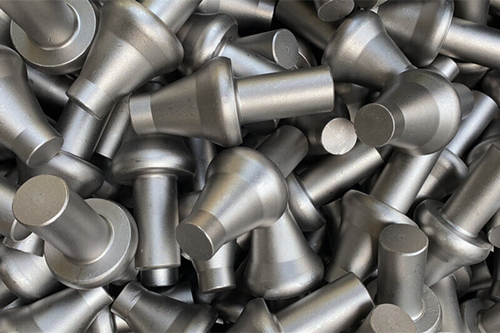Cold Forge Technology: 4 Major Advantages Of Using Cold Forged Machine Parts
Cold forging is a metalworking process in which a metal blank, or work-piece, is placed into a die and subjected to high pressure. Unlike hot forging, which requires heating the metal to high temperatures, cold forging operates at or near room temperature. This article explores the fascinating world of cold forging and highlights five significant benefits of using cold-forged machine parts.
Enhanced Strength and Durability
Cold forging offers remarkable advantages in terms of strength and durability compared to hot forging and other manufacturing processes. The room temperature forging process aligns the metal’s grain structure, resulting in increased tensile strength, hardness, and resistance to fatigue. Cold-forged machine parts exhibit exceptional toughness, making them suitable for applications where strength and longevity are critical, such as automotive components, aerospace parts, and industrial machinery.
Precision and Complex Geometries
One of the notable advantages of cold forging is its ability to produce highly precise and complex shapes with minimal material waste. The process enables the manufacture of intricate machine parts that may be challenging or costly to produce through other methods. Cold-forged components possess tight tolerances, ensuring consistent quality and compatibility during assembly. This precision makes them ideal for applications where tight tolerances and intricate designs are crucial, such as in electronics, locks, and medical devices.
Cost-Effective Production
Cold forging presents cost-saving benefits throughout the production process. As it involves shaping metal at room temperature, there is no need for energy-intensive heating and subsequent cooling processes required in hot forging. The absence of high temperatures also eliminates the need for complex and expensive temperature control equipment. Moreover, the inherent strength of cold-forged parts reduces the need for secondary operations such as heat treatment or additional machining, resulting in reduced production time and costs.
Improved Surface Finish and Aesthetic Appeal
The cold-forging process typically yields machine parts with superior surface finish and aesthetic appeal compared to hot-forged or cast components. The absence of extreme heat helps prevent surface defects, such as scaling and oxidation, resulting in a smooth, clean finish. Cold-forged parts often require minimal post-processing or finishing, reducing additional time and cost investments. The visually appealing and consistent surface finish of cold-forged machine parts makes them highly desirable for products requiring a polished appearance or direct end-user interaction.
Read more about cold forge.
